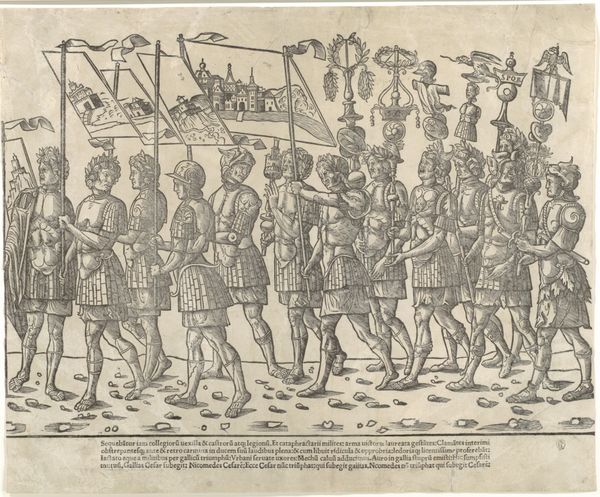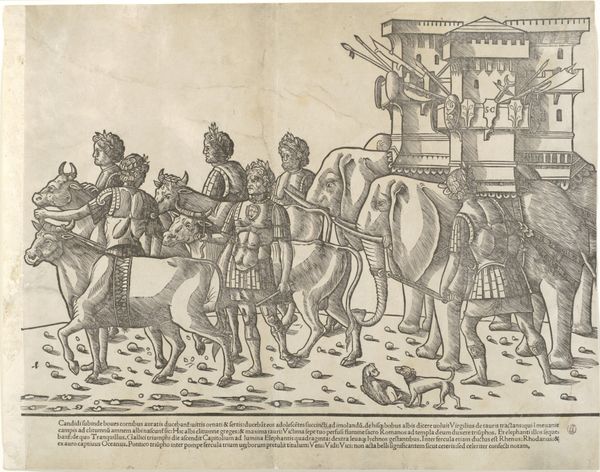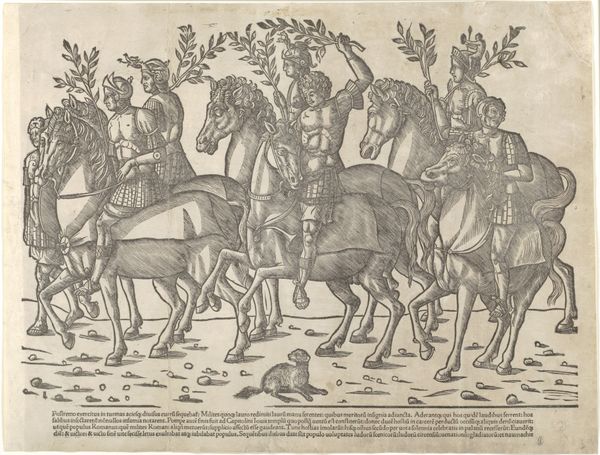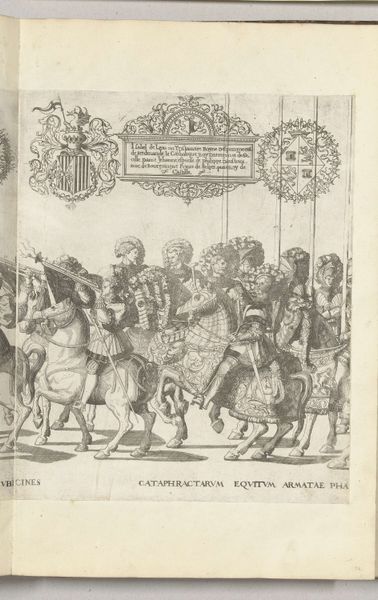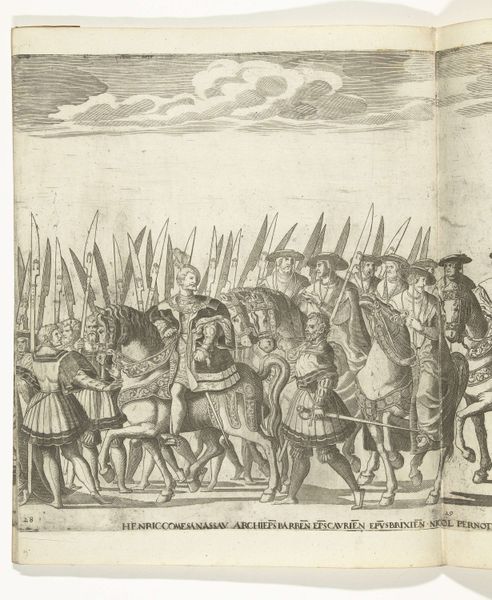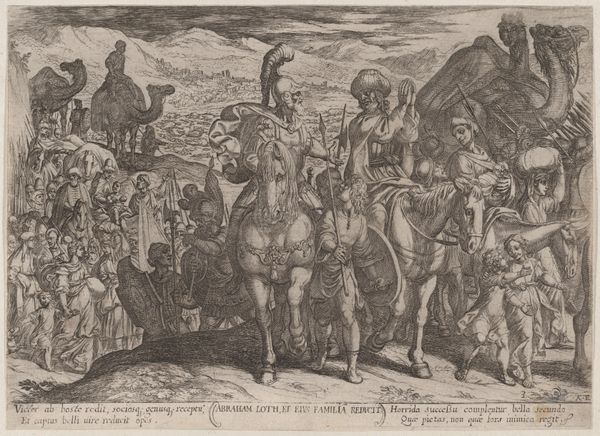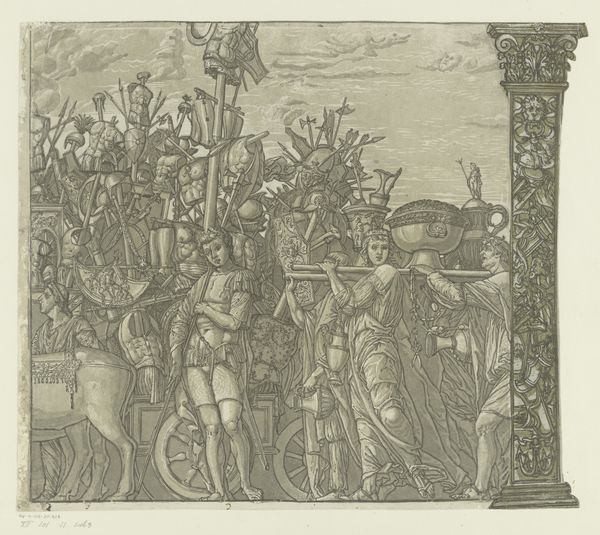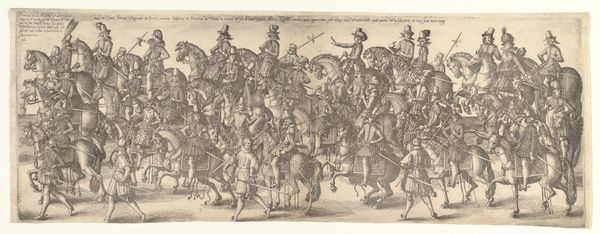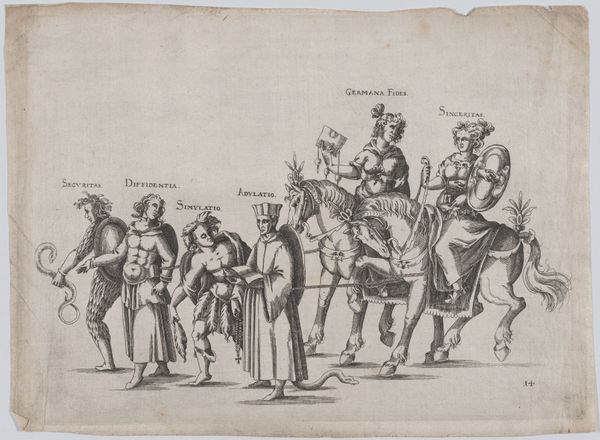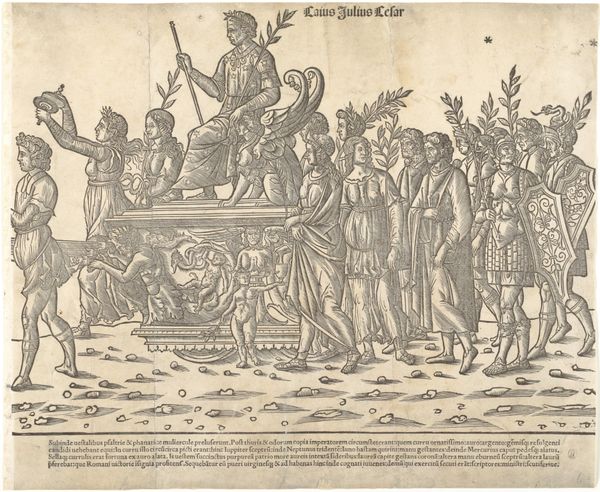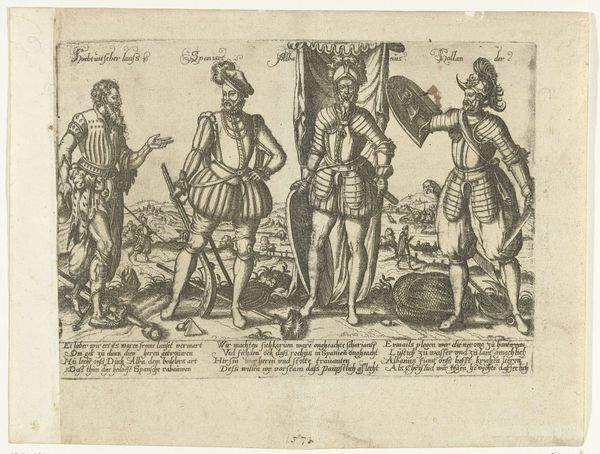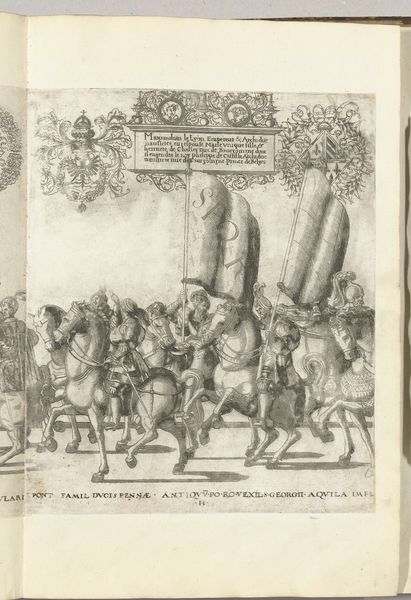
Figures bearing trophies and and carrying wreaths, from 'The Triumph of Caesar' 1504
0:00
0:00
drawing, print, woodcut, engraving
#
drawing
#
narrative-art
# print
#
figuration
#
11_renaissance
#
romanesque
#
woodcut
#
history-painting
#
engraving
Dimensions: Height: 12 13/16 in. (32.6 cm) Width: 16 5/16 in. (41.5 cm)
Copyright: Public Domain
Editor: So, this is “Figures bearing trophies and carrying wreaths, from ‘The Triumph of Caesar’”, made by Jacob of Strasbourg around 1504. It’s a black and white print. What strikes me is how the strong, almost repetitive lines really emphasize the labor involved in carrying these heavy looking objects. How do you interpret this work? Curator: Considering its creation around 1504, this print speaks volumes about the means of production available then. As a woodcut or engraving, it involved skilled artisans painstakingly carving an image meant for reproduction. What materials would have been available? What workshops fostered such skill? Let's think beyond the heroic subject matter, the 'Triumph of Caesar', to understand the cultural context shaping this print's very existence. The labour involved goes beyond the subjects depicted. Editor: So you're focusing on the physical act of making the artwork itself? The craftsmanship? Curator: Exactly! How does the consumption of images like this, made accessible through printmaking, change our understanding of art's value and accessibility? Is it shifting power to new merchant classes or consolidating old structures? We must understand these prints not just as illustrations, but as commodities reflecting broader social and economic currents. Editor: I see what you mean. The subject matter presents power and victory, but the printmaking itself democratized it, at least a little. So it’s not just *what* is depicted, but *how* it was made and distributed that matters. Curator: Precisely! It reframes the artwork as a product of labour within a specific social structure. The image itself almost becomes secondary to that. Editor: This gives me a whole new way of thinking about art! Thanks for shedding light on the materiality of this piece. Curator: And thank you for being open to seeing beyond the image. Materiality reveals hidden truths within even the most traditional works.
Comments
No comments
Be the first to comment and join the conversation on the ultimate creative platform.
